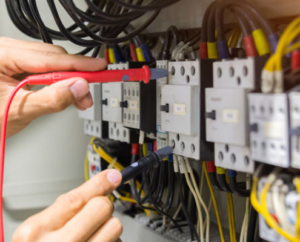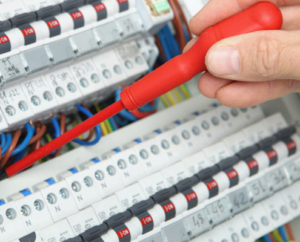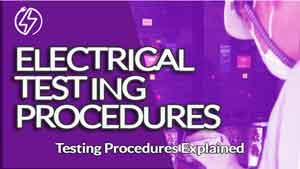Electrical Testing Procedures
Electricity is used in almost every aspect of our lives, so it’s important we maintain and inspect our supplies. After all, one small fault can instantly take a circuit offline; this means all our luxuries we take for granted – heating, lighting and communication systems – could be gone in a second. Therefore, electrical testing procedures are paramount in preserving the continuity of our electrical systems.
The workings of electrical systems can, of course, be complex and intimidating; few people, for example, know the difference between resistance and polarity. The good news is, though, that as a business owner or landlord, you don’t need to go too in-depth. All you need to know are the basics behind electrical testing.
What are Electrical Testing Procedures?
Landlords and businesses are obliged to follow electrical safety regulations, with the end goal being any risk around their electrical systems is as low as it can be. Demonstrating this level of safety can be achieved with the following procedures:
- Portable Appliance Testing (PAT): almost everyone who has had a job will have seen PAT testing in action. This safety procedure applies to individual electrical devices within the building, so can include anything from a photocopier to a desk fan. The aim of the PAT test is to identify any electrical faults which are present e.g. continuity issues, lead polarity and electrical leakage. Most commonly, a PAT test will take place within a business, although if deemed necessary, a landlord can also choose to commission one.
- Electrical Installation Condition Report (EICR): an EICR is carried out to evaluate the current condition of a building’s electrical and wiring systems. It’s a multi-pronged inspection which covers both a visual inspection and a more in-depth electrical inspection. The visual checks focus on any visible signs of damage such as burned plug sockets and damaged wiring. The electrical inspection, meanwhile, focuses on aspects including fail-safe circuits and earthing checks. Once a building has been determined to have passed its EICR, an EICR certificate will be issued.
Who Needs to Test and How Often?
You can only carry out a PAT test if you have received a PAT testing qualification. In order to achieve this qualification, an individual will often need to demonstrate previous experience in electrical engineering to pass. An EICR can, in theory, be completed by anyone, but it’s strongly recommended it’s completed by someone who is competent with electrical systems. For both PAT tests and the EICR, your safest option is to commission a qualified electrician to do this safely and correctly.
As regards the frequency of testing, an EICR needs to be completed every five years. A PAT test, when applying to stationary equipment and IT devices, will require testing every four years. However, when it comes to extension leads and portable equipment, PAT testing is recommended every two years.
Electrical Testing Implications for Landlords and Business Owners
Whilst PAT testing and the EICR is not a specific legal requirement, the ability to prove your electrical systems are safe is. Accordingly, by ensuring that electrical testing procedures are regularly completed, you are best placed to guarantee your premises are electrically safe to inhabit.
View the video – ‘Electrical Testing Procedures’
For additional electrical articles please visit our main BLOG page here






